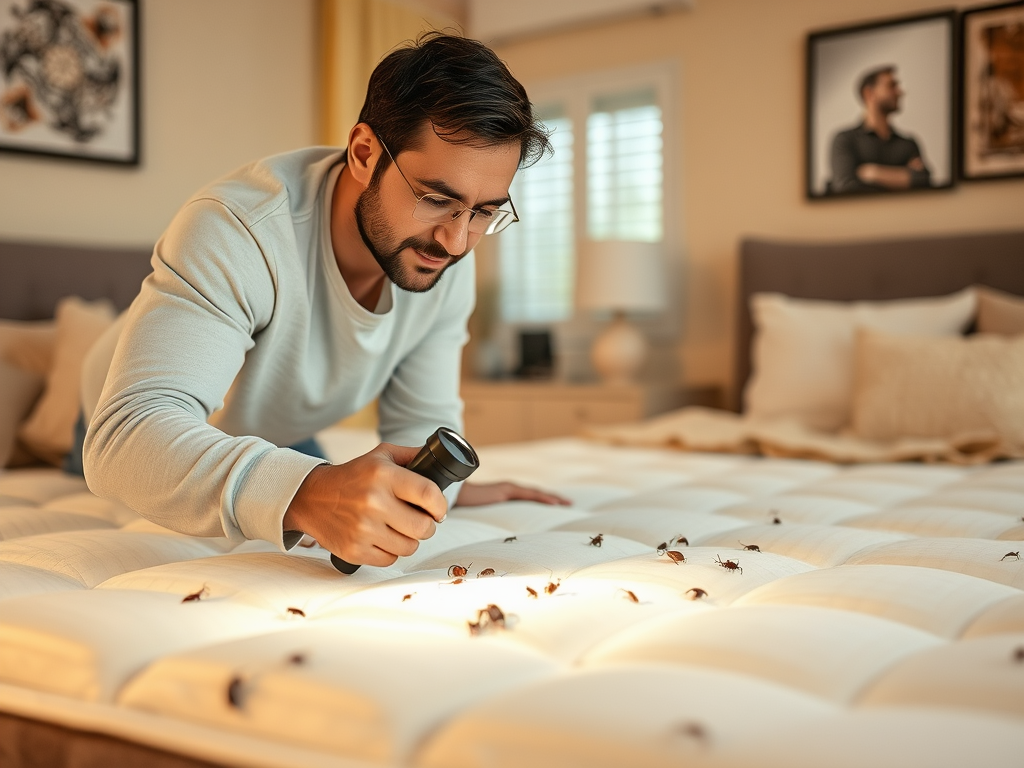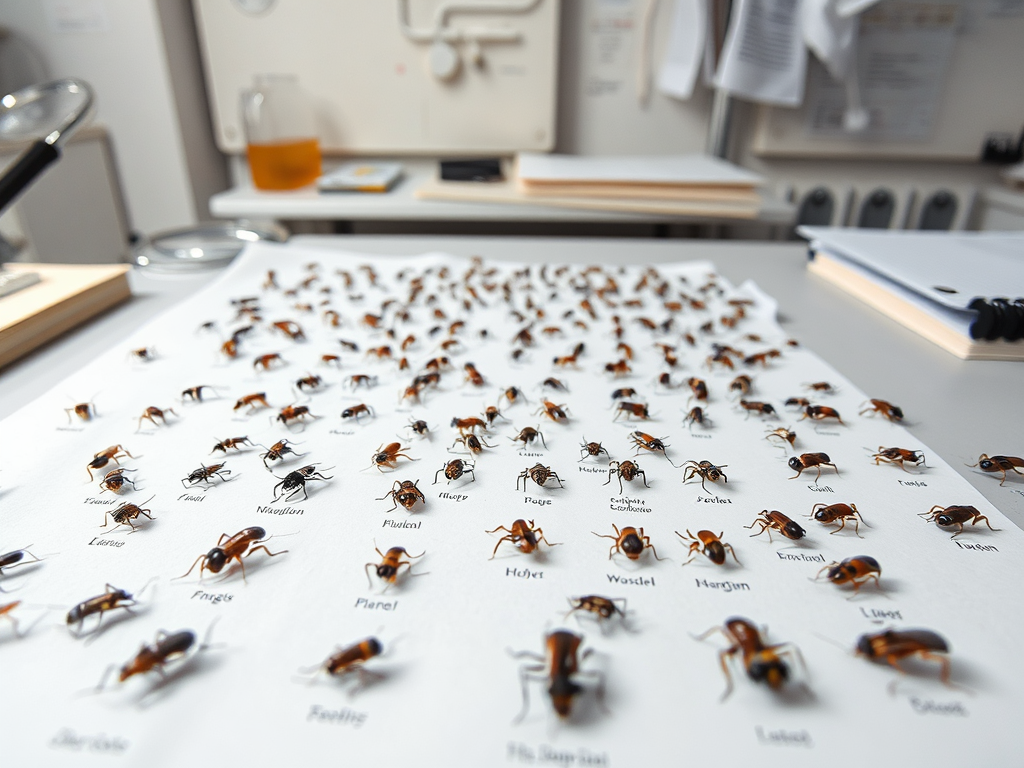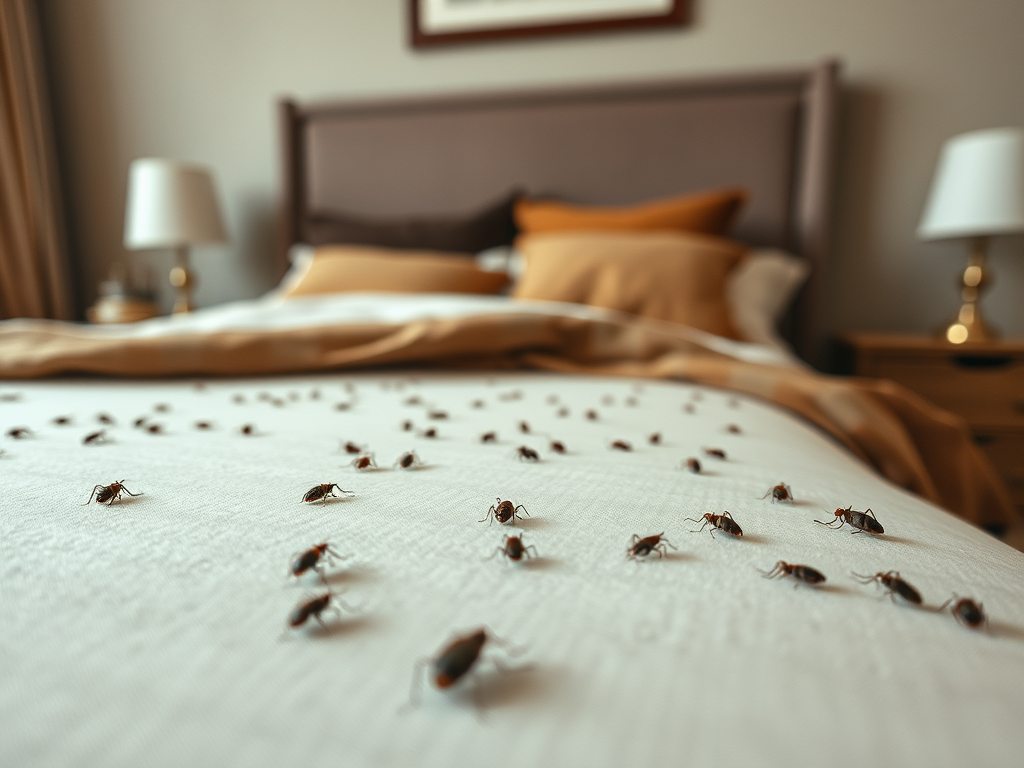Waking up to find small brown bugs in your bed can be a terrifying experience for any homeowner. The thought of unknowingly sharing your sleeping space with pests can lead to anxiety and discomfort. Identifying these pests quickly is crucial, as different bugs require different approaches to management and eradication. This guide aims to provide you with comprehensive insights into the most common small brown bugs that can invade your bed, how to recognize them, and effective methods to deal with them. By understanding these nuisances and their behaviors, you can reclaim your space and ensure a peaceful night’s sleep.
When faced with an infestation, knowing whether you’re dealing with bed bugs, fleas, or carpet beetles can make all the difference. Beyond just identification, we’ll delve into their characteristics, potential causes of infestations, and suitable prevention strategies. Armed with this knowledge, you can tackle the issue head-on, ensuring that your bed remains a sanctuary rather than a site of discomfort. Let’s explore the various types of pests, learn how to identify them, and discover the most effective treatment options available.
Common Types of Small Brown Bugs Found in Beds

The presence of small brown bugs in your bed does not just signal an unsanitary environment; it may indicate a deeper infestation problem that requires immediate attention. Insects like bed bugs, carpet beetles, and fleas may share similar appearances, but their impacts on your home vary significantly. It is essential to identify the right species to take the appropriate preventive measures.
Bed Bugs
Bed bugs are infamous for their blood-feeding habits, which can lead to discomfort and sleepless nights. They are small, usually about the size of an apple seed, with flat, oval bodies making them adept at hiding in seams and crevices. When bed bugs feed, they leave behind tiny, brownish stains on sheets and mattresses, which can help in identifying their presence. These nocturnal pests are notorious for being difficult to eliminate, as they reproduce rapidly and can hide in various locations within your home.
Carpet Beetles
While often mistaken for bed bugs, carpet beetles have distinct behaviors and can cause fabric damage. Unlike bed bugs, these pests do not feed on blood; instead, they tend to munch on natural fibers found in carpets, upholstery, and bedding. Adult carpet beetles are usually found in homes during warmer months, making them a seasonal nuisance. They can vary in size, appearing as small brown specks, making their detection all the more challenging.
Fleas
If you have pets, you may be all too familiar with fleas, as they prefer warm, furry companions. These pests can jump enormous distances relative to their size, and their bites are itchy and irritating for humans. A flea infestation in your bed can result from them hopping off your pet onto your bedding. They are typically dark brown or black and are more agile compared to bed bugs, posing different challenges for eradication.
Characteristics to Identify Small Brown Bugs

Correct identification starts with understanding the defining characteristics that distinguish these small brown bugs. Not all insects are created equal, and recognizing these traits can provide valuable insights for effective treatment. This aspect is particularly important given the urgency of addressing pest issues, which can escalate if not dealt with promptly.
| Bug Type | Size | Behavior | Sign |
|---|---|---|---|
| Bed Bugs | 4-5 mm | Nocturnal, slow crawlers | Blood stains and itchy welts |
| Carpet Beetles | 3-5 mm | Active during warm seasons | Damaged fabrics |
| Fleas | 1-3 mm | Quick jumpers | Itchy bites on skin |
In understanding the characteristics of these small brown bugs, consider their size and shape, behavior, and the signs they leave behind. Most small brown bugs range from 1 to 7 mm and display distinct body shapes, whether flat and oval like bed bugs or more elongated like carpet beetles. Furthermore, their behaviors provide essential detection clues—bed bugs tend to crawl slowly, making them easier to spot, while fleas are quick in their movements.
Causes of Small Brown Bug Infestations
Understanding the root causes of bug infestations is critical in preventing their recurrence. Infestations often originate from seemingly innocuous activities such as traveling or acquiring second-hand items, which can introduce pests into an otherwise healthy environment. Recognizing these triggers allows you to implement changes that minimize the risk of future bug problems.
- Travel: Bringing bugs back from hotels or public transport is a common way infestations start.
- Second-Hand Items: Items like furniture or clothing from thrift stores may harbor pests.
- Pets: Fleas can come from pets, so regular treatment is essential.
How to Identify Small Brown Bugs in Your Bed
Effective identification is no casual endeavor; it requires diligent inspections and careful consideration of where to look. Your bed is the primary suspect, but bugs could also dwell in nearby areas. Performing a thorough check not only ensures that you catch the infestation early but also helps in understanding the scope of the problem.
Inspecting Your Bedding
Begin with a detailed inspection of your sheets and mattress. Look for small brown stains, shed skins, or even live bugs themselves. Remember that these signs can vary widely depending on the type of bug you’re dealing with. After checking your bedding, proceed to look in crevices and seams, as these are favorites for hiding pests. A flashlight can be helpful in illuminating dark corners and revealing hidden intruders.
Examining Nearby Areas
Your inspection shouldn’t stop at the bed. Extend your search to nearby furniture, baseboards, and even carpets. Bugs can easily migrate from one area to another. Closely examining these areas can help you determine the full extent of the infestation and whether there are additional problems to address. Elevated vigilance will pay off in ensuring your living environment remains comfortable and safe.
Treatment Options for Infestations
Once you’ve identified the troublesome insects, the next step involves deciding on the most suitable treatment options. Addressing an infestation can be daunting, but understanding your choices—whether professional pest control or DIY solutions—can simplify the process. Taking immediate action is essential to prevent the health risks associated with an untreated infestation.
- Professional Pest Control: Hiring exterminators can provide a thorough extermination and long-term solutions.
- DIY Solutions: Steam cleaning and applying insecticides may work for minor infestations.
- Preventive Measures: Regular vacuuming and washing sheets in hot water can greatly reduce the risk of re-infestation.
Conclusion
Dealing with small brown bugs in your bed might initially seem overwhelming, but understanding the nature of these pests allows you to take informed actions. Through proper identification and understanding of the factors that lead to infestations, homeowners can effectively manage or prevent re-infestation entirely. Regular inspections and immediate attention to problem areas can dramatically improve your comfort and hygiene. By making your home less hospitable to pests and employing effective treatment methods, you can ensure that your bed remains a sanctuary for restful sleep.
Frequently Asked Questions
- What are the signs of a bed bug infestation? Small brown stains on sheets, tiny dark spots (droppings), shed skins, and itchy bites on the body are common signs.
- How can I prevent bed bugs? Use protective mattress encasements, regularly wash bedding in hot water, and inspect second-hand items thoroughly.
- Are small brown bugs harmful? Bed bugs primarily cause discomfort and allergic reactions, while carpet beetles can damage fabrics. Fleas can lead to skin irritations.
- How do I get rid of bed bugs myself? Vacuum thoroughly, wash bedding in hot water, use heat treatment, and apply specific insecticides if necessary.
- When should I call pest control professionals? If the infestation is widespread or DIY efforts do not yield results, it’s best to consult a professional for effective treatment.


